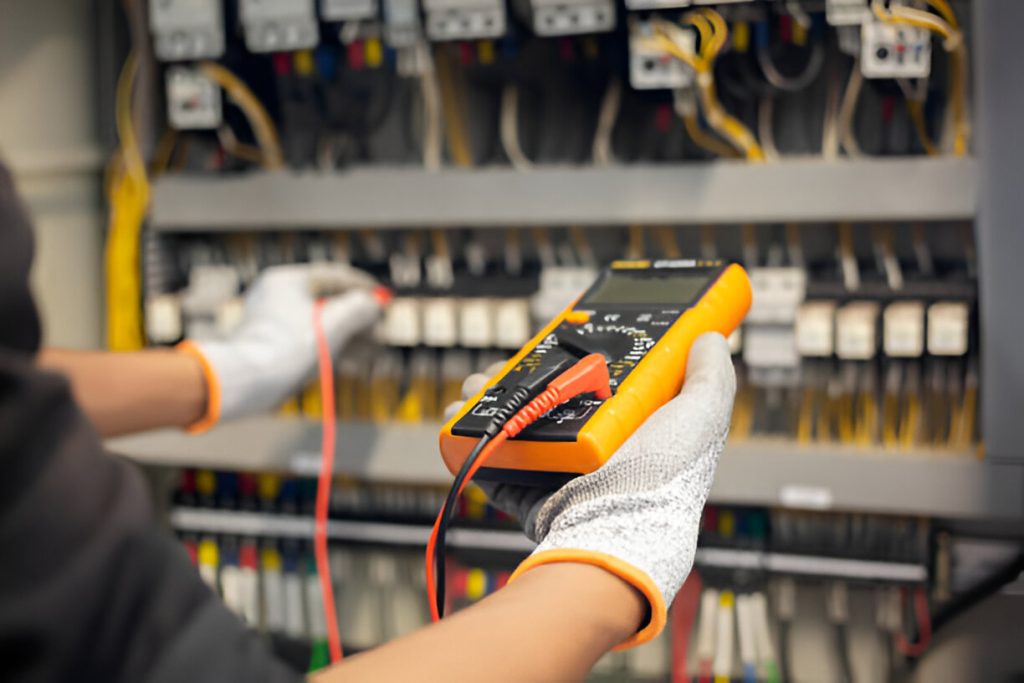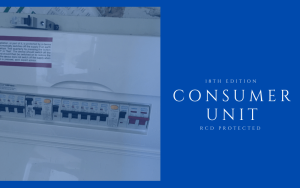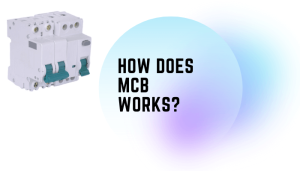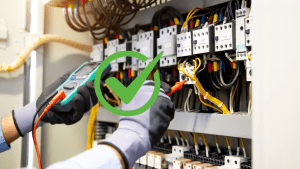EICR testing, or Electrical Installation Condition Report testing, serves as a critical examination designed to ensure that all electrical installations in a property meet the stringent safety standards required by law. This process not only identifies any potential electrical hazards that could pose risks to occupants but also assesses the overall condition and longevity of the property’s electrical system. For landlords and property owners, understanding the intricacies and implications of Eicr Testing is essential, not only to comply with legal obligations but also to maintain the safety and integrity of their properties. As we explore the nuances of this procedure, it becomes apparent why periodic reviews of electrical systems are not just advisable but indispensable.
Key Takeaways
- EICR Testing assesses the safety and compliance of electrical installations in properties.
- It identifies defects, deterioration, and potential hazards in electrical systems.
- Tests include visual inspections, insulation resistance checks, and RCD operation evaluation.
- The process is crucial for ensuring electrical safety in residential and commercial buildings.
- Compliance with EICR standards helps landlords avoid legal liabilities and fines.
Understanding EICR
What exactly is an EICR, and why is it crucial for maintaining electrical safety in properties? An EICR, or Electrical Installation Condition Report, is a formal document generated following a thorough assessment of the electrical installations within a property. This examination serves to identify any deterioration, defects, or conditions potentially leading to high risk, ensuring that the installations meet current safety standards.
The significance of EICR testing in properties, especially in densely populated areas like London, cannot be overstated. It acts as a preventive measure, identifying problems that could lead to electrical fires or shocks before they occur. For landlords, obtaining an EICR certificate is not just a regulatory requirement but a critical component in safeguarding tenants and properties alike.

Furthermore, in regions such as London where older buildings are common, EICR testing provides assurance that the electrical systems are not only safe but also capable of meeting modern demands.
The process, when conducted by certified professionals, assures property owners and occupants of the operational integrity and safety of their electrical infrastructure, reinforcing the importance of regular checks and maintenance.
The Testing Process
The testing process for an Electrical Installation Condition Report (EICR) commences with a thorough visual inspection of all accessible electrical systems within the property. This initial stage is critical, as it allows the inspector to identify any manifest signs of wear, damage, or non-compliance with current electrical standards. Following this, more detailed tests are conducted using specialized equipment to measure parameters such as insulation resistance, earth fault loop impedance, and residual current device (RCD) operation.
| Test Type | Purpose | Typical Tools Used |
|---|---|---|
| Visual Inspection | Identify obvious defects and hazards | Inspection manual, camera |
| Insulation Resistance | Test the integrity of electrical insulation | Insulation tester |
| Earth Fault Loop Impedance | Verify the effectiveness of the Earth system | Loop tester |
| RCD Operation | Check functionality of RCDs | RCD tester |
These tests, each designed to rigorously assess the safety and efficiency of the electrical installation, are critical for pinpointing areas that require immediate attention or future monitoring. The results are meticulously documented, providing a comprehensive overview of the electrical system’s condition. This data-driven approach ensures that any recommendations made are based on solid empirical evidence, aligning with best practices and safety regulations.
Landlord and Tenant Benefits
Regularly scheduled EICR tests provide significant advantages to both landlords and tenants, enhancing safety while protecting investments.
For landlords, the primary benefit lies in the assurance of electrical safety, which not only complies with legal obligations but also guards against potential liability in the event of electrical failures. This proactive approach minimizes the risk of costly emergency repairs and extends the longevity of electrical installations, thus preserving the property’s value.

Tenants benefit from regular EICR testing through enhanced safety and peace of mind. The detailed evaluation of electrical systems ensures that any potential hazards are identified and rectified before they can pose a serious threat.
This is particularly crucial in older buildings where wiring and installations might not have been updated to meet current standards. Moreover, tenants are empowered with the right to request and review the EICR document, reinforcing transparency and trust between the tenant and the landlord.
Potential Consequences
While regular EICR testing provides numerous safety benefits and legal protections, failure to adhere to these standards can have serious repercussions. Non-compliance, especially in regulated sectors, not only poses direct safety risks but also carries substantial legal and financial penalties.
The following list outlines the potential adverse outcomes of neglecting EICR obligations:
- Legal Liabilities: Landlords and property managers face severe penalties for non-compliance, which can include fines up to £30,000. Additionally, failure to provide a safe living environment can lead to criminal charges, particularly in the event of tenant injuries due to electrical faults.
- Insurance Invalidity: Insurance policies often require adherence to safety regulations, including regular EICR testing. Ignoring these requirements can lead to the invalidation of property insurance, leaving the property owner financially vulnerable to damages and litigation.
- Increased Risk of Accidents: Without regular inspections and necessary corrections, the risk of electrical fires, shocks, or other hazardous incidents escalates significantly, jeopardizing the safety of occupants and resulting in potential legal actions from injured parties.
- Operational Disruptions: For commercial properties, unresolved electrical issues can lead to operational interruptions. Persistent electrical problems can cause equipment damage, reduce productivity, and ultimately impact business profitability.
Key Insights and Questions
Addressing common inquiries about EICR, property owners and managers often seek clarity on the specific components inspected during tests, such as wiring, socket outlets, light fittings, and distribution boards. Each of these elements plays a critical role in ensuring the overall safety and efficiency of a property’s electrical system.
The inspection process meticulously evaluates the condition and compliance of these components with current electrical standards. For instance, wiring is examined for signs of deterioration or incorrect installations that could pose risks. Socket outlets are checked for mechanical damage and correct polarity, while light fittings are inspected to ensure they are securely fixed and appropriately rated for the circuit.
Further questions typically involve understanding the implications of fault classifications such as C1, C2, and C3. These codes offer a prioritized framework for addressing issues detected during an EICR. A C1 classification indicates an immediate danger requiring prompt action, while a C2 suggests potential danger, urging remedial action soon.
Understanding these nuances allows property owners to make informed decisions about necessary repairs, ensuring safety and compliance. This analytical approach underscores the crucial nature of EICR in maintaining electrical integrity and safety standards.
Frequently Asked Questions
Can Homeowners Request an EICR Even if It’s Not Legally Required?
Yes, homeowners can request an Electrical Installation Condition Report (EICR) voluntarily to assess the safety and integrity of their property’s electrical systems, even if not mandated by law. This promotes proactive maintenance and safety.
How Does Weather Impact the Scheduling of an EICR?
Weather conditions can significantly influence the scheduling of electrical inspections. Adverse weather, such as heavy rain or extreme cold, may delay testing due to safety concerns for personnel and potential equipment malfunction.
Are There EICR Requirements for Newly Built Properties?
Yes, newly built properties require an Electrical Installation Condition Report (EICR) to ensure all electrical installations meet current safety standards. This is crucial for validating the safety and compliance of the electrical systems installed.
What Specific Qualifications Must an Electrician Have to Perform EICR?
To perform EICR, an electrician must be qualified and competent, typically requiring a Level 3 Certificate for the Inspection, Testing, and Certification of Electrical Installations or equivalent credentials from a recognized industry body.










